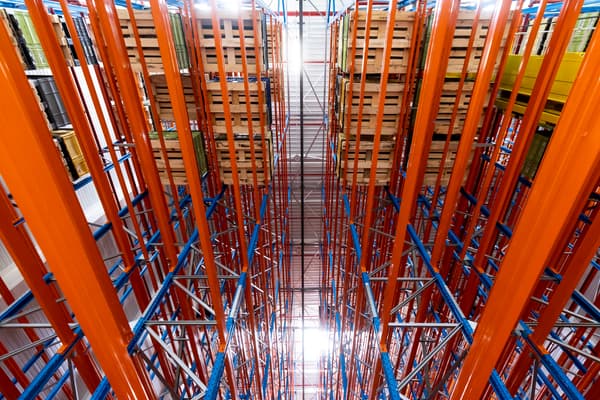Transforming a historic industrial site, which started its car production in 1912, into a modern factory, well prepared for the challenges of the beginning of the 21st century: this is what Stellantis has just achieved in Sochaux.
a secure future
The group has just completed a €200 million modernization plan started in 2017, when PSA had not yet merged with FCA to form Stellantis. Five years later, “the factory has established itself as the most efficient site in Europe for the manufacture of multi-energy SUVs”, stressed Arnaud Deboeuf, industrial director of Stellantis during a visit to the Sochaux plant organized for the press on Monday, September 5. . .
Clearly, enough to ensure the production of the successor to the second generation of the Peugeot 3008, one of the biggest successes of the lion brand in recent years. This model, whose production will be launched in 2024, will be offered in a 100% electric version and will be based on the new “STLA medium” platform.
A number one European position in SUV production referring to the competition launched by Stellantis between each site:
“We play with an open book to promote the sharing of skills and production methods. It has become the striking force of our manufacturing having created in a few months a community (of factories) with rankings published every month based on various criteria such as the number of defects observed per vehicle, explains Arnaud Deboeuf. It’s a desired interaction between the sites to implement what works and correct what doesn’t.”
In sight: productivity gains through “thrifty investments”, which should make it possible to absorb the impact of the transition to electricity. Last year, the Mulhouse site, a few dozen kilometers away, also completed a major modernization plan to bring back production of the Peugeot 308, the previous generation of which was assembled in Sochaux.
Industrial downsizing
To be among the best industrial students of Stellantis in Europe, the Sochaux site applied a kind of “industrial reduction”, according to this English term that is used to designate the reduction in the size of motors, an important trend before the electric transition . programmed.
In recent years, the Sochaux plant has significantly reduced its built area, reduced to 172 hectares after the sale of 44 hectares to the Montbéliard country agglomeration, but also the size of the buildings.
The assembly, quality control and logistics workshop, which previously occupied five different buildings, is now in one, located in the heart of the industrial estate.
“The era of the big factories is over, Togliatti, it’s over,” jokes Arnaud Deboeuf, referring to the manufacturing city of the Russian manufacturer Avtovaz, which Renault has just abandoned in the context of the war in Ukraine.
The key is greater operational efficiency: “before the transformation, a part had an average of one kilometer to go from the unloading dock to the place of consumption: a distance reduced to 200 meters”, Stellantis points out.
Although the government has called on companies to be energy sober in the face of the risk of shortages this winter, this “compacting of the site” also makes it possible to reduce consumption linked in particular to heating. Energy consumption would thus have been reduced by 20% compared to last year.
The “stracker crane”, or optimized logistics
Beyond downsizing the site, it is a brand new building that Stellantis is betting big on to optimize its production logistics. At 25 meters tall, the “Transstocker”, its small name, can store more than 4,200 pallets of small part packs and deliver one pallet every 18 seconds.
Like the large logistics warehouses of an e-commerce giant like Amazon, everything is automated: once placed on a conveyor belt, the pallet is scanned by cameras to be stored on impressive shelves.

The pallet can then be “called” down the production line and transported in record time. Storage is optimized for easy access to parts most likely to be stressed.

On the side of the new production line, which currently assembles the Peugeot 3008 and 5008, a ceaseless ballet of robots transports the components to the various assembly stations.
In another building, the new stamping workshop has a new line of high-speed presses: steel and aluminum elements are transformed into doors and other body parts in record time. A facility that allows the entire production of Sochaux and even other sites to be carried out, whereas previously it occupied three lines of presses.
Strengths in an uncertain environment
A modernization that should also allow the factory to better face the crises that have occurred since 2019 and the start of the covid in China. In Sochaux, Stellantis had to stop production several times this year. In doubt, the lack of components, in particular the famous semiconductors. But the group knew how to organize itself.
“This requires working with our purchases, with our suppliers, with daily monitoring to adapt needs, reassign cars, choose cars where there is more demand from our customers, so a lot of flexibility,” says Arnaud Deboeuf.
The results of the first half allow you to show some optimism, with a net profit of 34% in the first half for Stellantis.
Source: BFM TV

